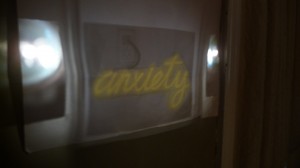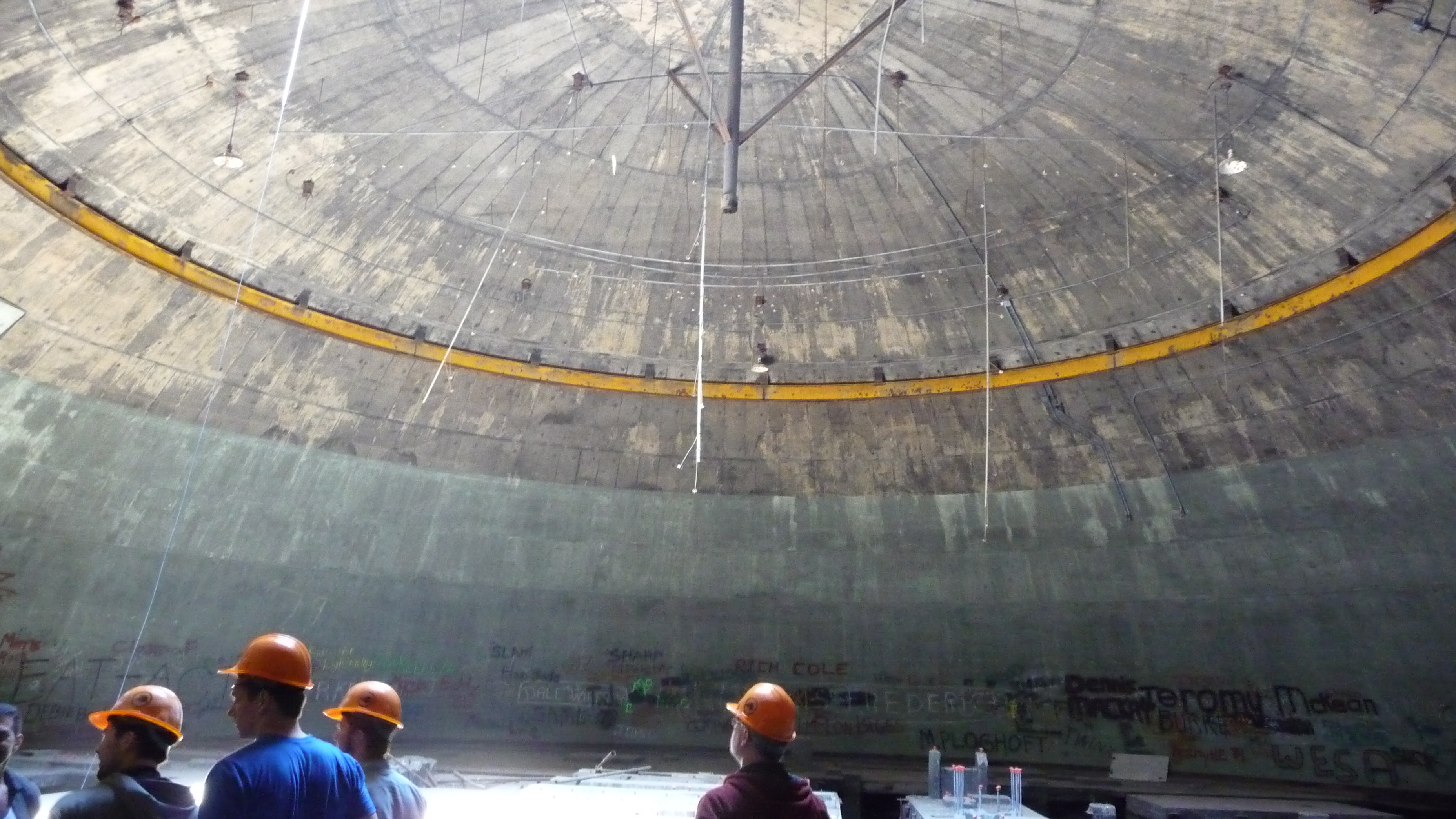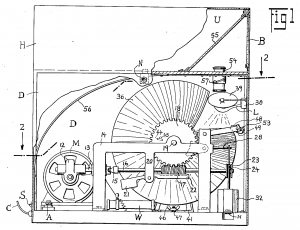Blast Domes and Opaque Projectors
A good chunk of Toorcamp occurred in a Titan 1 missile silo amongst a complex of hemispherical blast domes. The power dome is the largest and least obstructed of these, and the open space obliterated sound into crackling and unfocused echos. 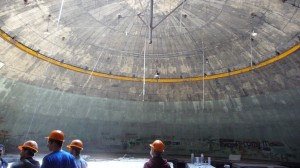
Standing in the dome I drifted back to my obsession of the last two months- the R & D of an updated mutoscope standard. I’m using hemispherical reflectors in mutoscope’s opaque projector, and although my intuition lead me toward this shape, I didn’t really understand how it worked until standing in the blast dome, trying to make out a human voice.
Classically, mutoscopes use peep viewers, but I thought that a thoroughly modern mutoscope would project either internally or externally to an appropriate home viewing size of about 20″ diagonal. But opaque projectors are extremely inefficient. I can only assume that inefficiency, heat stress, and poor image quality doomed William Rabkin’s patented 1933 (#2,070,840) mutoscope.
Most commercial designs consist of a single light bulb in a reflective box. The projected image is riven with glare in cheap models and vignetting in even the best projectors. I figured I could do better.
In an attempt to out-do existing projectors, I decided to directly illuminate the projected page with spot lights. But no matter what the configuration of the lights I couldn’t throw an even light across the projected image, and I got even more nasty hot spots and glare than commercial projectors.
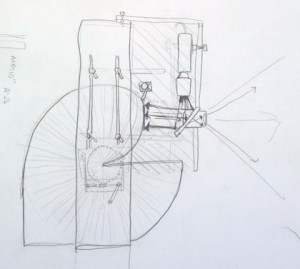
But walking down Union st in Brooklyn one Sunday, I noticed a standard clamp light with a diffusion powder coat on the inside of it’s hemispherical reflector. The radious of the hemisphere is 5″ in diameter, not far off the focal distance of my 125mm lens. By facing my lens at the top of the hemisphere and facing my lights inwards such that their filaments are level with the picture plane, I created a perfect band of light across the image.
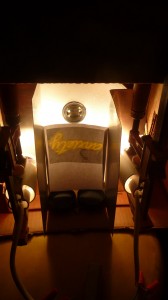
I erroneously thought that I was bouncing the light across the interior of the sphere, but standing in the blast dome listening to people talk I realized that a sound generated within the hemisphere reflects along the curve of the dome, dispersing off imperfections at every point it touches. My powder-coated reflector is doing the same thing with light. I’m not sure of the math, but there is an inverse relation between the the source to edge distance and the number of reflections.
